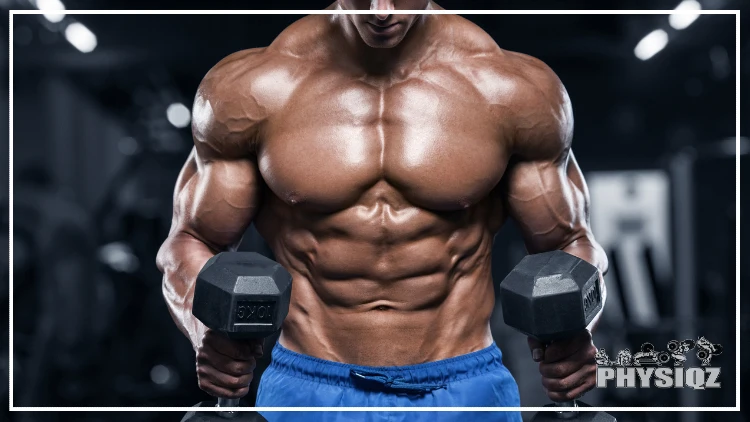
Many debate whether or not abs show without flexing or if it’s even possible, but if you’re lean enough, regardless of how muscular you are, abs can show without flexing.1
While a low body fat percentage is the main way to get visible abs without flexing, being muscular can help too. The real-life pictures of six-packs with and without flexing below are a testament to this fact, but there are plenty of skinny people with abs as well.
In this article, we’ll explain which exercises to choose, dieting tips, the first sign of getting abs, positive fat loss signals to look for along your journey, and a way to cut water weight and get those abs showing for a special occasion.
Getting visible abs is no easy feat and can take months of hard work and dedication, but this guide is designed to teach anyone how to get abs of steel without flexing.
Achive Abs Without Flexing
Yes, it is possible to have abs when not flexed, although many Instagram pictures and movie stars flex them for a more defined, and apparent look.
In general, a lower body fat percentage will reveal a person’s six-pack and before you begin to wonder if you have to train abs religiously for them to show, the answer is no — not really.
There’s countless youngsters who’ve never trained a day in their life and due to a combination of genetics, leanness, and potentially sports, have well defined abs.
Why Don’t My Abs Show Unless They’re Flexed?
There are a number of factors that contribute to visible abs such as having low body fat percentage and/ or having abdominal muscles that are not fully developed.
Here are the main reasons why abs may not be showing without flexing:
Bad Posture—Bad posture can often be the culprit for keeping the abs hidden away when they are not being flexed. This is often caused by what is known as the anterior pelvic tilt which causes the front of the pelvis to rotate forward and the back of the pelvis to rise, often causing lower back pain, and occurs due to the sedentary nature of the majority of people nowadays.2
The tilt occurs as a result of the lengthening of the hip extensors and hip flexors that have been shortened. As a result, the belly is pushed out and additional stress is placed on the lower back.
Body Fat— Barring a bad posture and the biggest reason, abs will simply not be visible if there is a layer of body fat that is covering them.
Not Fully Developed Thick Abs—Abs that are weak, undeveloped and not toned will fail to show especially when someone does not flex them, even if their body fat percentage is below threshold required for them to be visible.
Abs That Are Not Toned—When muscles are toned, it implies that they have a certain amount of tension that they possess when in a relaxed and rested state. When this is low, abs will not be easily seen when they are being flexed.
Alcohol Consumption—Alcohol has a high calorie content providing 7 kcal. Per gram making it a formidable contributor to weight gain which will lead to high fat and reduces abs visibility.3
High Levels of Stress—When individuals are stressed out, they have elevated levels of cortisol which causes abdominal obesity and chronic presence of this hormone in the bloodstream is typically a marker for tendency to obesity.4 Stress factors such as inadequate sleep can contribute to these levels.
Bad Genetics— Genetics may play a part in the inability of seeing abs without trying, or without flexing. Some individuals with bad ab genetics may have a predisposition to have fat occur around their bellies which may obscure the abs or they may have bad insertion points leading to small, oddly shaped abs that simply don’t show when flexed.
What Do Flexed vs Unflexed Abs Look Like? Pictures & Descriptions
To the untrained eye and layman, flexed and unflexed abs may look the same, but there is a marked difference in how they both look. When flexed, abs will be very much pronounced, defined and appear fairly large when compared to those that are not flexed.
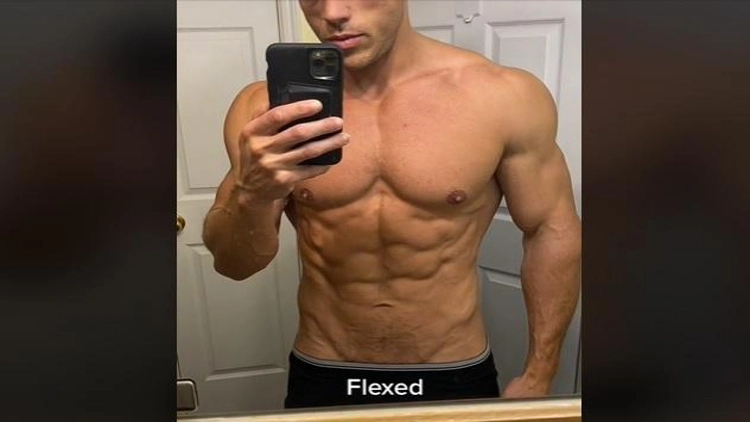
Flexed Abs — Source: @tylerjonesphysique from TikTok5
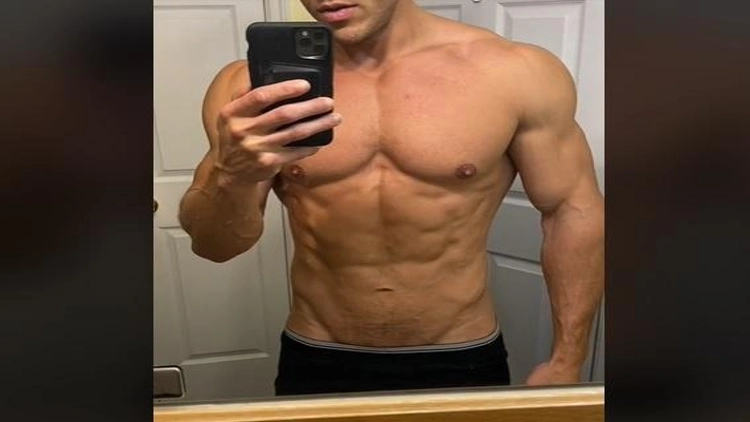
Unflexed Abs — Source: @tylerjonesphysique from TikTok5
As long as the posture is correct, and body fat percent about 12%-20% and that someone knows how to contract them, then they should become visible.
Here are some pictures that show individuals with their first image in an unflexed (relaxed) position followed by one where they are flexing (contracting) their abs.

Unflexed Abs — Source: Dylan O’Brien from YouTube6
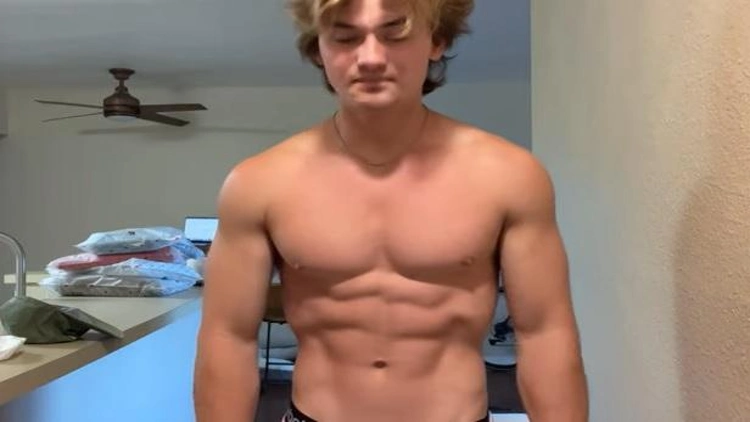
Flexed Abs — Source: Dylan O’Brien from YouTube6
As can clearly be seen, the abs are much more prominent, distinct and bigger when they are flexed. Picture perfect abs of models, actors and athletes are almost always flexed especially when they appear more noticeable.
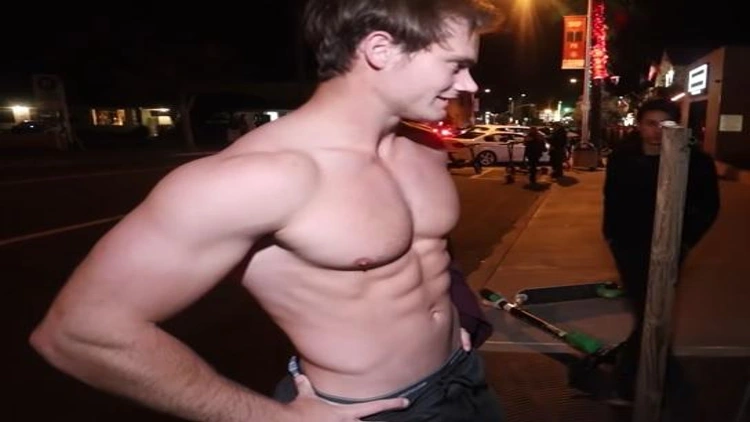
Flexed Abs — Source: Connor Murphy from YouTube7

Unflexed — Source: Connor Murphy from YouTube7
First Sign of Having Abs
It’s a wonderful feeling for anyone aspiring to have abs to finally see some indications that there is light at the end of the tunnel.
Some of the first signs to look for that confirm that a 6 pack is on the way are weight loss, more definition in the abdominal area and reduction of the waistline.
Leaner & More Defined Muscles in the Entire Body
When the body takes on an athletic look and starts to look leaner and have muscles that are much more well defined, then this means that they are also generally losing weight and the abs are not too far from being visible.
Waistline Reduction
Once there is a reduction in the waistline, the abs are not too far away from being apparent and the best indication of this is that clothes are now loose at the waist and /or the need to tighten the belt. This is a clear sign that fat is being lost in the abdominal section and a key step to visible abs.
Increased Definition in the Abdominal Section
As there is less amount of fat and skin in the locale of the lower part of the ribs and close to the stomach, the sides of the abdominal muscles (obliques) will be the first to surface before the midsection becomes apparent.
Overall Weight Loss
There is no clear way to directly target the fat around the abdominal section and anyone who makes this claim is speaking falsely. Many times, the fat around the abdominal area is stubborn since a significant portion of it is visceral fat—but once someone begins to lose weight, as evidenced by the scales and through exercise and diet, belly fat is not far off from melting away.8
Individuals who have embarked on a ways to jump start weight loss program usually experience this.
How To Get Abs or a Six Pack Abs Without Flexing (How To Get Abs To Show Even When Not Flexed)
There are a number of steps that someone can take to get abs when not flexed and that show when they are in a rested state as opposed to being contracted (flexed) to have them appear.
These counter the reasons why they don’t display in the first place, and include lowering the overall body fat percentage, cutting water weight before a competition and training and hitting abs frequently.
Lower Your Body Fat Percentage To Get Abs Unflexed (Achieve & Maintain a Calorie Deficit)
There is a common adage that goes that abs are made in the kitchen and the biggest reason that people can’t see their abs is due to having a high body fat percentage resulting in a fat layer that covers the abs making them obscure.
Giving up on weight loss is not the answer—on the contrary, weight loss is the solution, and in particular getting into a calorie deficit that will force the body to tap it into its fat reserves to expend them for energy.
A calorie deficit is a state where the body is ingesting less calories than it is consuming, resulting in a shortfall that is compensated with burning fat reserves for fuel.
Ideal body fat percentage varies slightly for men and women since women tend to carry more fat and less muscle mass due to genetics.9
For abs to visible in women, body fat percentage must fall in the 14%-19% range, while for men, the spectrum is between 6% and 13%. However, for both men and women, body fat percentages of 10% will result in visible abs, but for women, they will be in an essential fat range which is at a challenging level.
To arrive at these percentages, the fitness enthusiast will have to take steps to alter and then maintain the new diet to reduce calories by:
Consuming Complex Carbs—The body will still need fuel to fulfill its energy requirements and especially when there is a training regimen; these can be satisfied by eating complex carbs such as whole grains, vegetables, legumes, fruit and beans. Carbs such as sweet potatoes, quinoa and oats and quinoa should be avoided.
Some may wonder is quinoa good for weight loss, it may be to some extent but contains a high amount of carbs which would not be ideal for reducing overall calories. When it comes to how much oatmeal should you consume daily to lose weight.
It would be advisable to keep this under 2 servings per day to be able to maintain a calorie deficit. Quinoa and oatmeal are both complex carbs, and moderation should be exercised when consuming them to maintain calorie deficits.
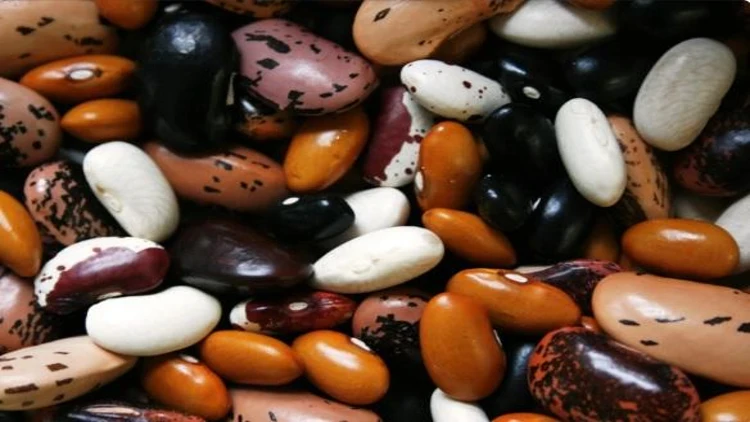
An assortment of beans. Source: JanNijman via Pixabay10
Eating More Fiber—Fiber rich foods are great for weight loss due to a high number of nutrients and the fact they take a longer time to digest thus keeping someone fuller for a longer time.11
Fruits, vegetables, legumes and whole grains again foot this bill and there should be an effort to consume 4 servings of vegetables per day being careful to ensure they are not starchy.
Eating Less Sugar— Sugar is not all bad for the body, only specific types such as added sugar in sweetened drinks such as soda, juice and energy drinks—these should be removed from the diet. There is also sugar hidden in many products such as chocolates, yogurt, sauces, marinade and even whole wheat bread!
Pay attention to labels to minimize sugar intake.
Staying Hydrated With More Water —Water is life, and it is needed to maintain the body’s physiological processes such as turning food into energy, supporting the organs and allowing for nutrient distribution in the body. Aim to drink 2 liters of water a day as it is associated with eating less and an increase in lipolysis (breakdown of fats).12
Staying Away From Processed Foods—Processed and fried food such as white bread, brownies, cookies, chips, cakes and pasta must be avoided.
These foods are laden with calories, sugar, sodium and fat and have vital nutrients such as fiber and iron stripped from them.
Increasing Protein— Protein will help build and maintain muscle and increased protein intake of between 15% to 30% of the total carbs consumed will result in increased fullness (satiety) resulting in less overall calorie intake.13
To keep track of their progress, fitness enthusiasts can employ the use of the body weight planner which accepts input of metrics such as weight, sex, age, height and physical level activity.14 They can state what their target weight goal is and how much physical activity they are willing to put in.
This will give them the calories they need to consume per day such as eating 500 calories daily for a month to reach their stated goals and not end up in a situation where they have lost weight but body fat percentage increased.
It should be noted that while cutting body weight is healthy, it is not ideal to be lean all year round as some fat is still required in the human body. Both males and females should not diet for more than 3-6 months at a time without including a maintenance phase where they can take a ‘break’ and add some bulk to prevent fatigue.
Cut Water Weight Before a Special Occasion Such as a Competition, Photoshoot, Pool Day or Wedding
Cutting water weight is an extremely effective way to have the abs without flexing and can make them be pronounced and defined before a competition, photo-shoot or as in a powerlifting water cutting routine, but should be done in a safe way.
The human body is made of 60% water and up to 90% of the body weight is a result of water.15 In a nutshell, the method involves temporarily dehydrating the body which allows water weight to be lost and timed for the event at hand which will result in the muscles looking dried out and cut.
- To initiate this process, someone should drink excessive amounts of water to hyper hydrate 2-4 days before the competition consuming between 1.5 to 2 gallons while reducing the amount of sodium consumed.
- This excessive consumption will result in the release of vasopressin hormone that is responsible for regulating water in the cells and will cause the body to urinate and sweat more frequently. It is therefore imperative to prevent electrolyte imbalances due to the large quantities of water, and individuals should pace themselves throughout the day drinking approximately 1 liter every 2 hours.
- After this period, for about 2-3 days, the water intake should now be dropped to 1 to 1.5 liters a day until the scheduled event. During this time, the process can be helped by doing low intensity sweat sessions such as walking, running or using a sauna. Some may wonder is sauna recommended for losing belly fat—it will not necessarily be good for losing fat, but will help in the extraction of water from the body. The diet at this time also needs to be basic including having plain fish, chicken, vegetables and staying away from salty seasonings and sauces.
- On the day of the competition, there should be little drinking of water and consumption of carbs as these will make someone ‘spill’ and render the whole exercise futile. A few sips of water to get the food down is acceptable.
Once the event passes, it is critical to rehydrate and to eat and to do this gradually increasing it back to normal levels. Feasting at once can make someone sick.
Consuming coconut water, liquid carbohydrate drinks or even Gatorade can help restore electrolyte levels and replenish energy.
How To Get Abs When You’re Already Skinny: Try Carb Loading if You Have Low Body Fat but No Abs
For most individuals, the main reason that their abs cannot be seen is due to having a higher body fat percentage; however a good number already have low body fat and are skinny but still do not have visible abs. In scenarios like this, a lack of proper nutrition and effective strategy is missing to grow their abs.
Carb loading will be an effective way to bulk up and supplement strength training exercises to grow the abs. These steps should be taken to get bigger and stronger abs but without significantly increasing body fat.
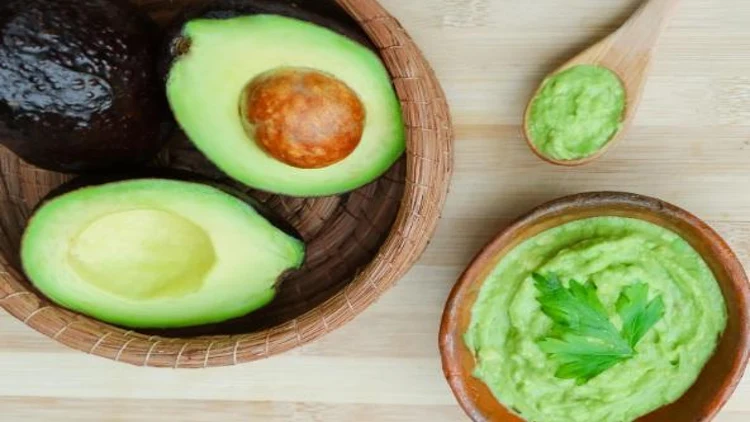
Source: Studio Mexico via Canva.com16
- Calorie intake is increased through carb loading with the source of carbs coming from leafy vegetables such as kale, broccoli, spinach and peppers. Whole grains and starches such as potatoes, quinoa, and oats are acceptable. Legumes and beans should also be included in the diet—they include black beans, chickpeas and lentils.
- Increase the amount of lean protein consumed from high quality protein sources such as chicken breast, fish, turkey and shellfish. The recommended amount should be between 1.2-2 grams of protein daily per kilogram of bodyweight to supplement the training program.17
- Healthy fats should be included in the diet and these can come from eating nuts, olive oil and avocados.
Hit Abs Frequently & Through Rep Ranges That Elicit Hypertrophy To Get Abs Without Flexing
For both individuals that have high and fat body fat percentages, their abs may not be visible because they are not adequately developed and therefore defined—a correct diet in these cases is not sufficient, and adequate strength training is required to elicit hypertrophy (muscle growth).
Therefore, simply indulging in a calorie deficit without exercise routine will not be adequate especially if the abs are not well developed.
The abs will need to be trained sufficiently to grow. To grow the abs, training them with more volume will result in more muscle growth for individuals.18
Training volume is computed by multiplying the number of sets an exercise is done by the number of reps and the load that is used.
With that said, there are also some training volume landmarks that will need to be adhered to ensure that the muscle is not only adequately trained, but also to avoid overtraining that could result in injury. These volume landmarks should be observed to ensure an efficient training program is in place to achieve results.
Minimum Effective Volume (MEV)—MEV is the minimum amount of training to grow muscle. The MEV should and will need to climb higher as the training progresses within each mesocycle (a training period that lasts 4-6 weeks) to ensure effective muscle stimulation.
Maintenance Volume (MV)—MV is the amount of volume needed to maintain muscle. When an individual is training their abs, and they are able to make gains above the levels of muscle, there will be a need to train at MV levels to retain the muscle growth that has been achieved.
Maximum Adaptive Volume (MAV)—MAV is the range of volumes to make the best gains. This will always go up with each mesocycle eventually exceeding the MRV (maintenance recoverable volume) which will demand a deloading of volume.
Maximum Recoverable Volume (MRV)—MRV is the maximum amount of training to grow muscle before reaching overtraining. The key will be for the enthusiast to slowly make their way to this amount rather than just reach it.
The Ultimate Training Program To Get a 6 Pack Abs Without Flexing
This program should put someone with a desire to get a 6 pack without flexing on the path to achieving well chiseled and aesthetically pleasing abdominal muscles. Below is a summary of exercises that will develop the core to get abs without flexing, and allow them to be defined and visible without any effort.
They are done as a superset with the first two done together in one workout and the other two done in a separate workout.
These can be done 3 times a week and there should be no rest between exercises in one superset. Rest should only be done once a superset is completed and should be for 60 seconds.
Be sure to pay attention to the volume landmarks stated in the previous section to allow for effective volume and prevent overtraining, like doing 500 crunches a day, which can easily lead to injuries like lower back pain. Varying the training and frequency, similarly to a daily undulating periodization program will help avoid plateaus that may hamper progress.
Cable Crunches Exercise 1(a)
- Sets: 3
- Reps: 15-20
Incline Bench Reverse Crunches Exercise 1(b)
- Sets: 3
- Reps: 15-20
Hanging Leg Raises Exercise 2(a)
- Sets: 3
- Reps: 15-20
Hanging Knee Raise Exercise 2(b)
- Sets: 3
- Reps: 15-20
Cable Crunches
Cable crunches are excellent because the cables ensure there is a constant tension and they target both the upper and lower abs.
- These are performed using a rope attachment to a cable and the lifter should choose the appropriate weight.
- Facing away from the machine and directly in front of it, grip the rope with palms from behind the head with palms facing inward and drop down to the knees.
- The lifter should have the buttocks rest on their feet and while keeping elbows bent and hands at shoulder and/or head height, crunch down as much as possible.
- Maintain this position and slowly back to the start.
Incline Bench Reverse Crunches
This exercise is similar to doing hanging leg raises as it mimics its movement, but since the lifter is lying on a bench, it is easier to do.
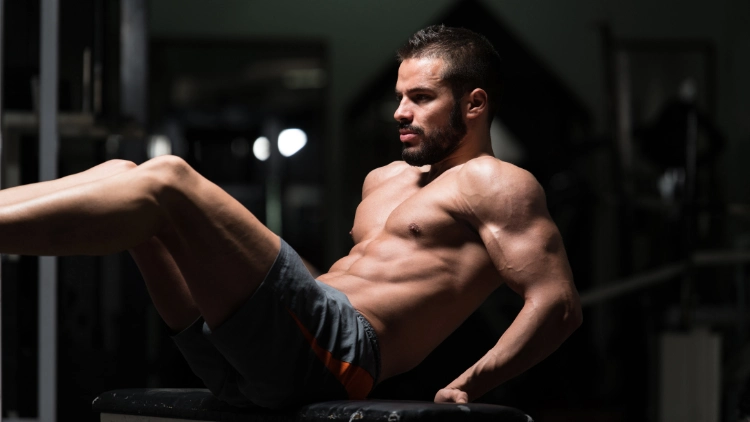
Source: Ibrakovic via Canva.com19
- Someone should commence by laying down on an incline bench while gripping the top with both hands; maintain this position and do not slip from it.
- Place the legs such that they are parallel to the floor employing the abs to hold them in place. Hands and feet should be together—this is the starting position.
- Initiate the movement by moving legs towards the torso and roll the pelvis backwards.
- The hips should then be raised off the bench until the knees are touching the chest.
- This position of contraction should be held for 1 second before moving the legs back to the starting position.
Hanging Leg Raises
Hanging leg raises target primarily the lower abs and involve hanging from chin up bar or even a tree. They can also be used as a method on how to eliminate of upper belly fat.
There should be no swinging action as momentum will take away the required activation of the abs.

Source: Ibrakovic via Canva.com20
- When in the hanging position, ensure there is tension in the midsection and legs remain straight.
- Raise the legs while they remain straightened slowly and high as possible.
- Pause this position for a second and slowly lower the legs to the starting position.
Hanging Knee Raise
Hanging knee raises like hanging leg raises are done when the lifter is hanging but these have an increased focus on the lower abs. They should also be done in a controlled manner.
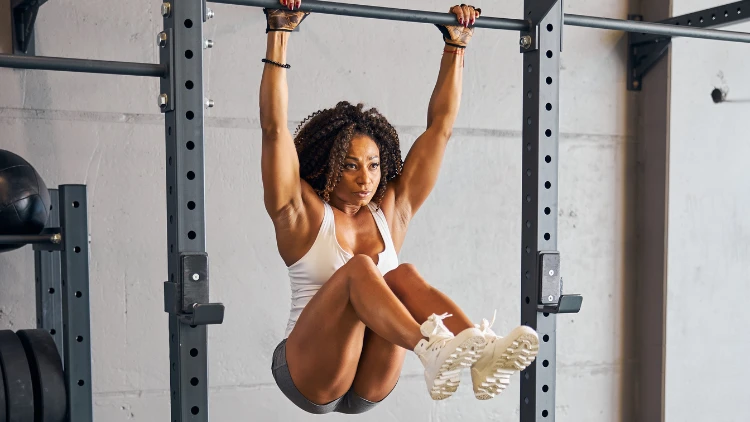
Source: yacobchuk via Canva.com21
- The lifter should grip the bar with a shoulder width and if someone is tall, they may increase this width to ensure their feet don’t touch the floor.
- Once in the hanging position, slowly pull the knees up making sure that the legs are together.
- There should be a pause for a second in the top position and then the lifter should slowly lower their knees back to the starting position.
Most of the numerous pictures depicting Hollywood stars and athletes are often captured when they are flexing their abs.
However, it is also possible for fitness enthusiasts to embark on a journey on ways to get abs without flexing and once having traveled on this road for a while, be on the lookout for this to give them an indication on the first signs of having abs.
References
1Nikolas_jkd. “Muscular man working out in gym, strong male torso abs.” Canva, 13 December 2011. Accessed 13 April 2023. <https://www.canva.com/photos/MAC4JsQxvII-muscular-man-working-out-in-gym-strong-male-torso-abs/>
2Anders Falk Brekke, S. O.-L. (2020, January 20). Non-surgical interventions for excessive anterior pelvic tilt in symptomatic and non-symptomatic adults: a systematic review. Retrieved 2023, from <https://www.ncbi.nlm.nih.gov/pmc/articles/PMC7017593/>
3Gregory Traversy, J.-P. C. (2015, January 8). Alcohol Consumption and Obesity: An Update. Retrieved 2023, from <https://www.ncbi.nlm.nih.gov/pmc/articles/PMC4338356/>
4S D Hewagalamulage, T. K. (2016, July). Stress, cortisol, and obesity: a role for cortisol responsiveness in identifying individuals prone to obesity. Retrieved 2023, from <https://pubmed.ncbi.nlm.nih.gov/27345309/>
5@tylerjonesphysique. TikTok, Accessed 1 April 2023. <https://www.tiktok.com/@tylerjonesphysique/video/7116998439128403205?lang=en>
6Dylan O’Brien. “How to flex your abs differently, Seriously how to flex them differently, no clickbait.” YouTube, 14 November 2022, Accessed 1 April 2023. <https://www.youtube.com/watch?v=631ePoI5Gos>
7Connor Murphy. “Getting Abs Mid Conversation! | Connor Murphy.” YouTube, 6 January 2020, Accessed 1 April 2023. <https://www.youtube.com/watch?v=29O55n3gw6Q>
8Harvard Health Publishing, H. M. (2019, June 25). Abdominal fat and what to do about it. Retrieved 2023, from <https://www.health.harvard.edu/staying-healthy/abdominal-fat-and-what-to-do-about-it>
9Health, H. T. (2022, August). Body Fat. Retrieved 2023, from <https://www.hsph.harvard.edu/nutritionsource/healthy-weight/measuring-fat/>
10JanNijman. “Assorted Beans and Legumes.” Canva. Accessed 13 April 2023. <https://www.canva.com/photos/MADQtnCvE30-assorted-beans-and-legumes/>
11Derek C Miketinas, G. A. (2019, June 7). Fiber Intake Predicts Weight Loss and Dietary Adherence in Adults Consuming Calorie-Restricted Diets: The POUNDS Lost (Preventing Overweight Using Novel Dietary Strategies) Study. Retrieved 2023, from <https://www.ncbi.nlm.nih.gov/pmc/articles/PMC6768815/>
12Thornton, S. N. (2016, June 10). Increased Hydration Can Be Associated with Weight Loss. Retrieved 2023, from <https://www.ncbi.nlm.nih.gov/pmc/articles/PMC4901052/>
13David S Weigle, P. A. (2005, July). A high-protein diet induces sustained reductions in appetite, ad libitum caloric intake, and body weight despite compensatory changes in diurnal plasma leptin and ghrelin concentrations. Retrieved 2023, from <https://pubmed.ncbi.nlm.nih.gov/16002798/>
14Services, U. D. (2020). Body Weight Planner. Retrieved 2023, from <https://www.niddk.nih.gov/bwp>
15Interior, U. D. (2019, May 22). The Water in You: Water and the Human Body. Retrieved 2023, from <https://www.usgs.gov/special-topics/water-science-school/science/water-you-water-and-human-body>
16Studio Mexico. “Guacamole And Mexican Avocados.” Canva, 13 December 2011. Accessed 13 April 2023. <https://www.canva.com/photos/MAEHEeFWXbE-guacamole-and-mexican-avocados/>
17Becker, T. (2017, February 14). Protein intake for athletes. Retrieved 2023, from <https://www.canr.msu.edu/news/protein_intake_for_athletes>
18BRAD J. SCHOENFELD, B. C. (2018, December 14). Resistance Training Volume Enhances Muscle Hypertrophy but Not Strength in Trained Men. Retrieved 2023, from <https://www.ncbi.nlm.nih.gov/pmc/articles/PMC6303131/>
19Ibrakovic. “Abdominal Crunch On Bench Plank Hip Raise.” Canva, 13 December 2011. Accessed 13 April 2023. <https://www.canva.com/photos/MAD0WPU0bEY-abdominal-crunch-on-bench-plank-hip-raise/>
20Ibrakovic. “Young Man Performing Hanging Leg Raises Exercise.” Canva. Accessed 13 April 2023. <https://www.canva.com/photos/MAEE6t6te60-young-man-performing-hanging-leg-raises-exercise/>
21yacobchuk. “Female gymnast performing the hanging knee raise.” Canva, 13 December 2011. Accessed 13 April 2023. <https://www.canva.com/photos/MAEQZyTOk2E-female-gymnast-performing-the-hanging-knee-raise/>